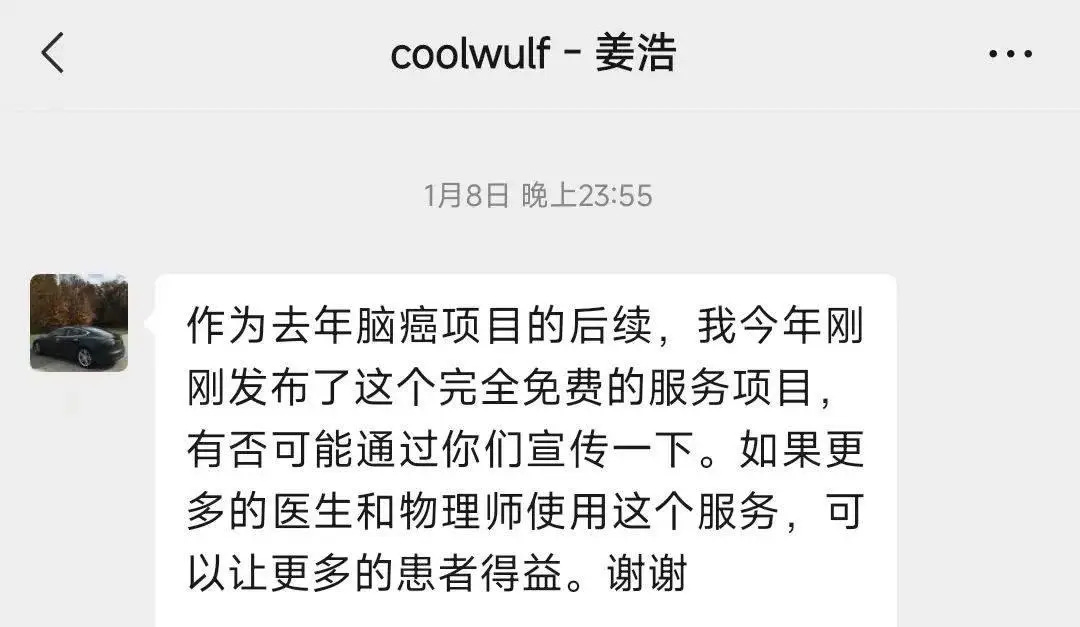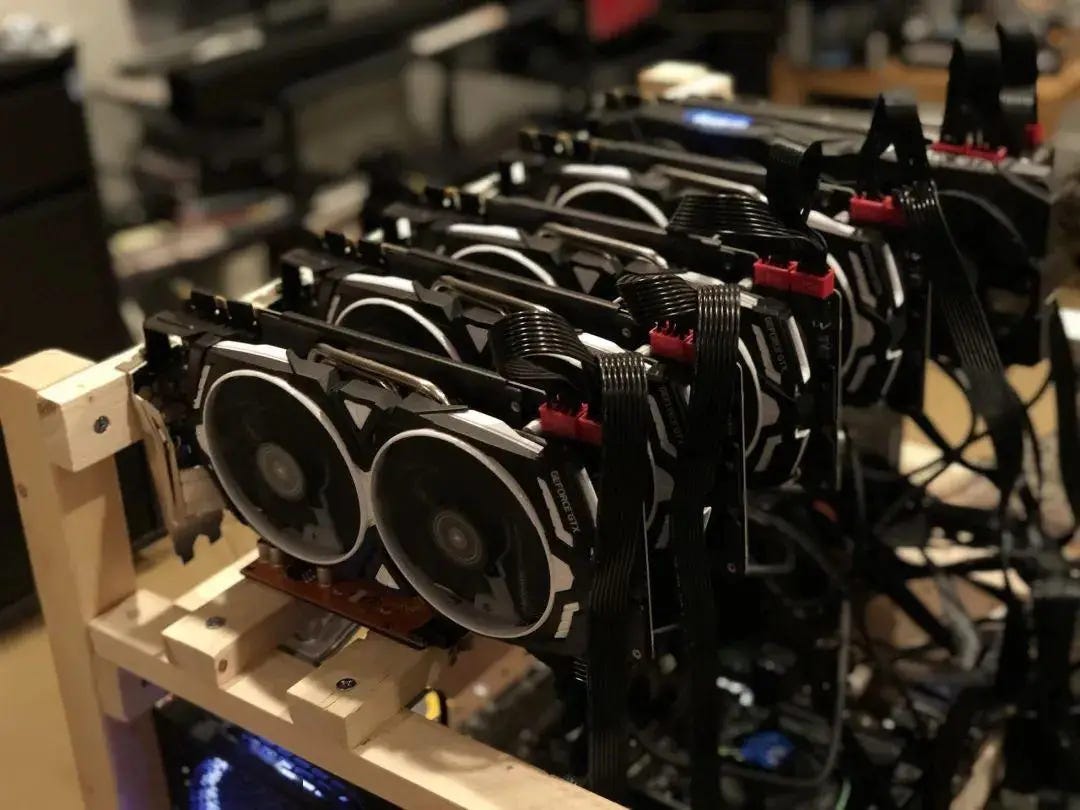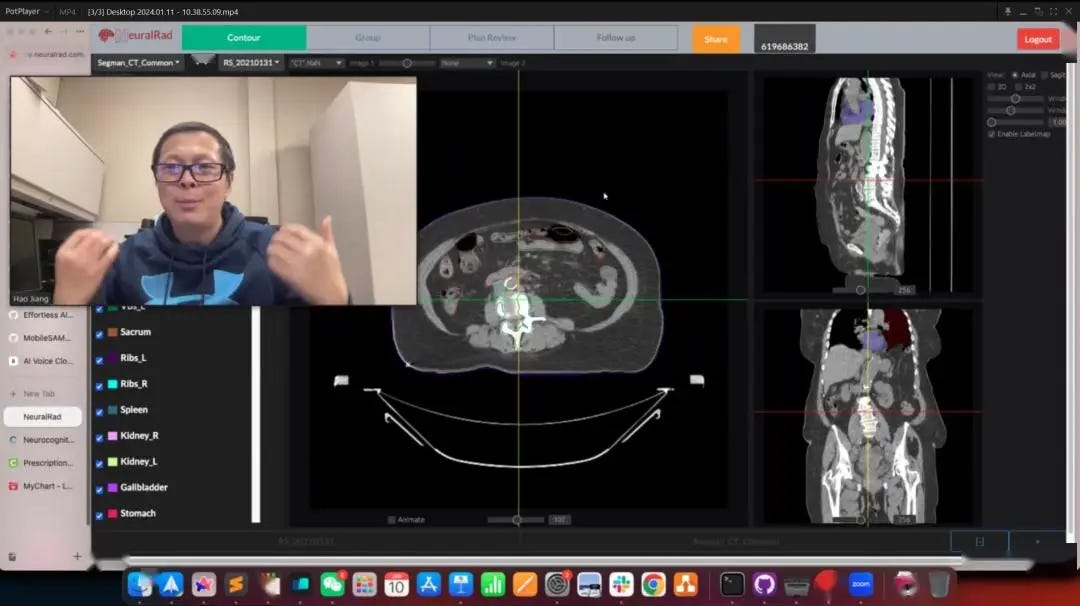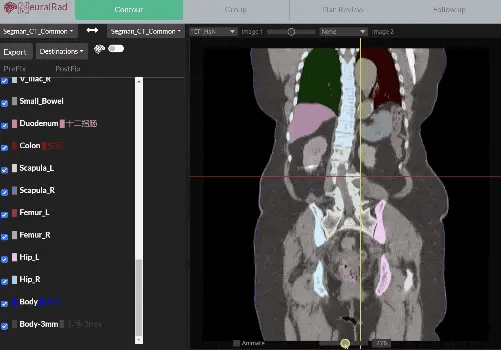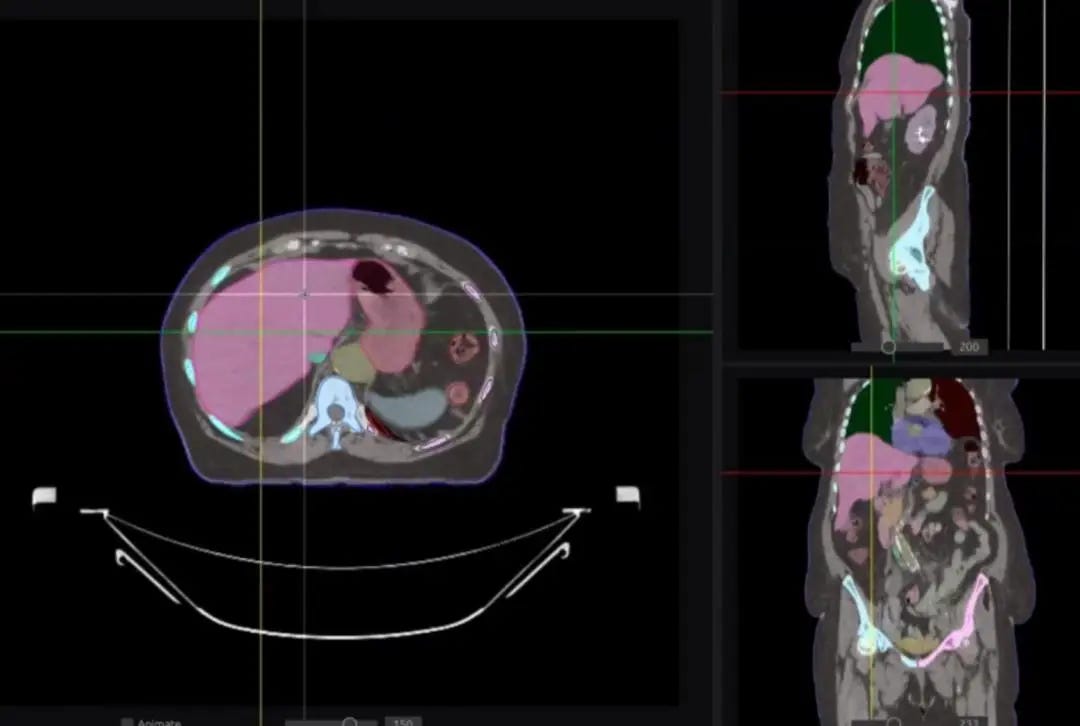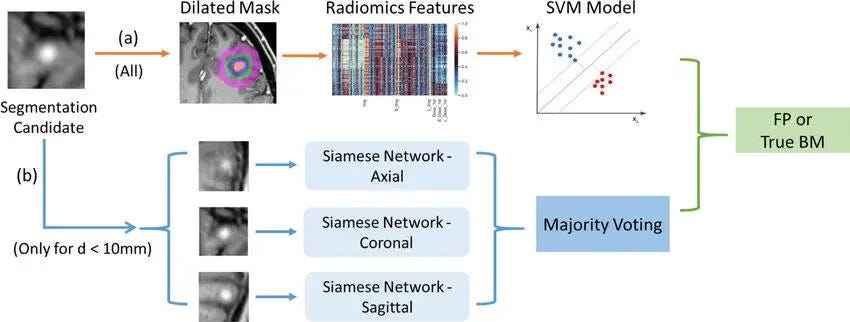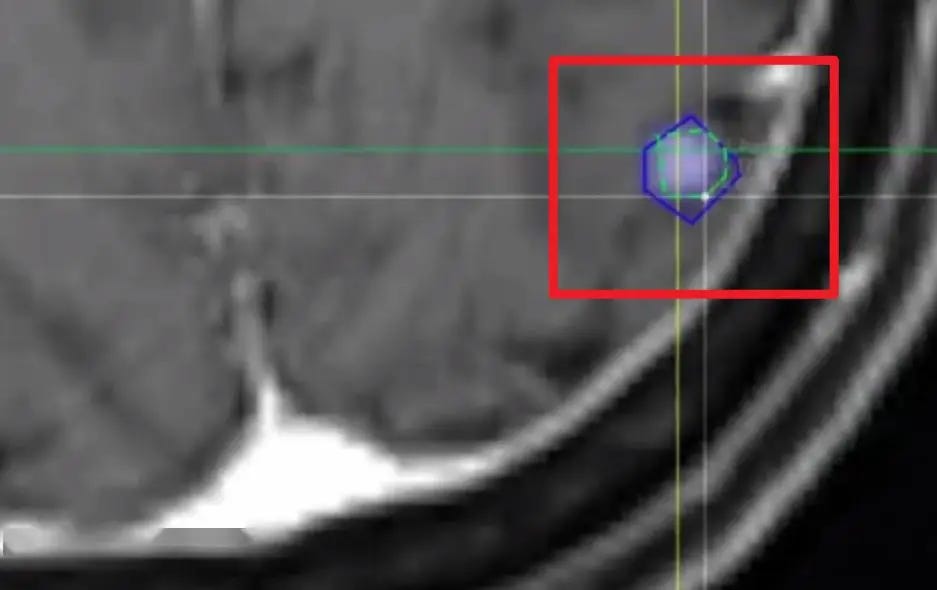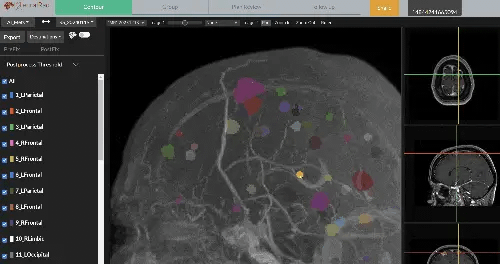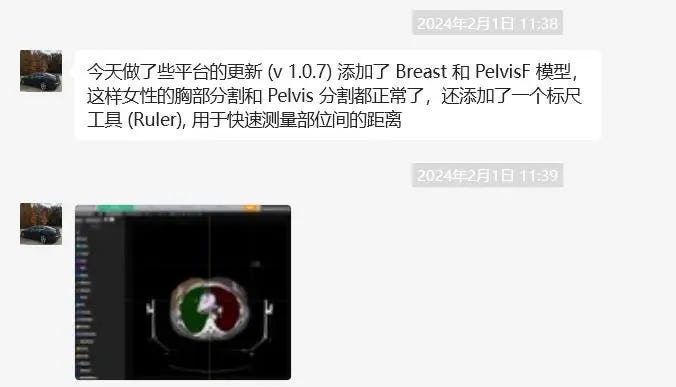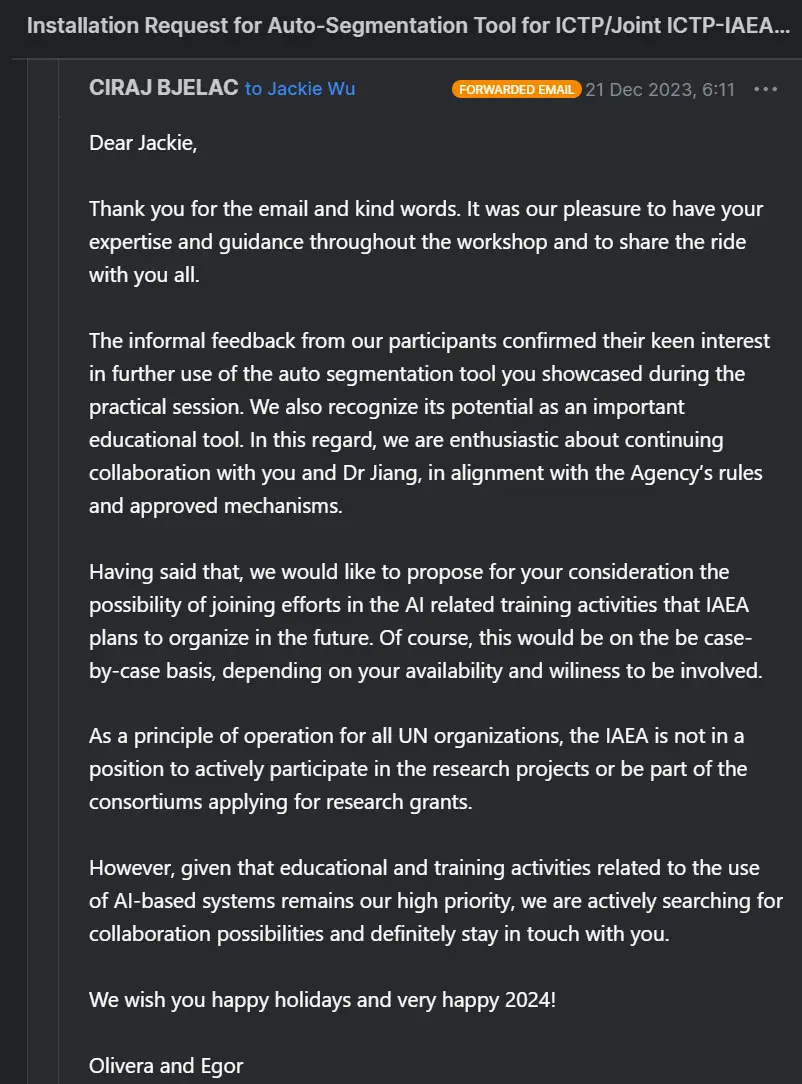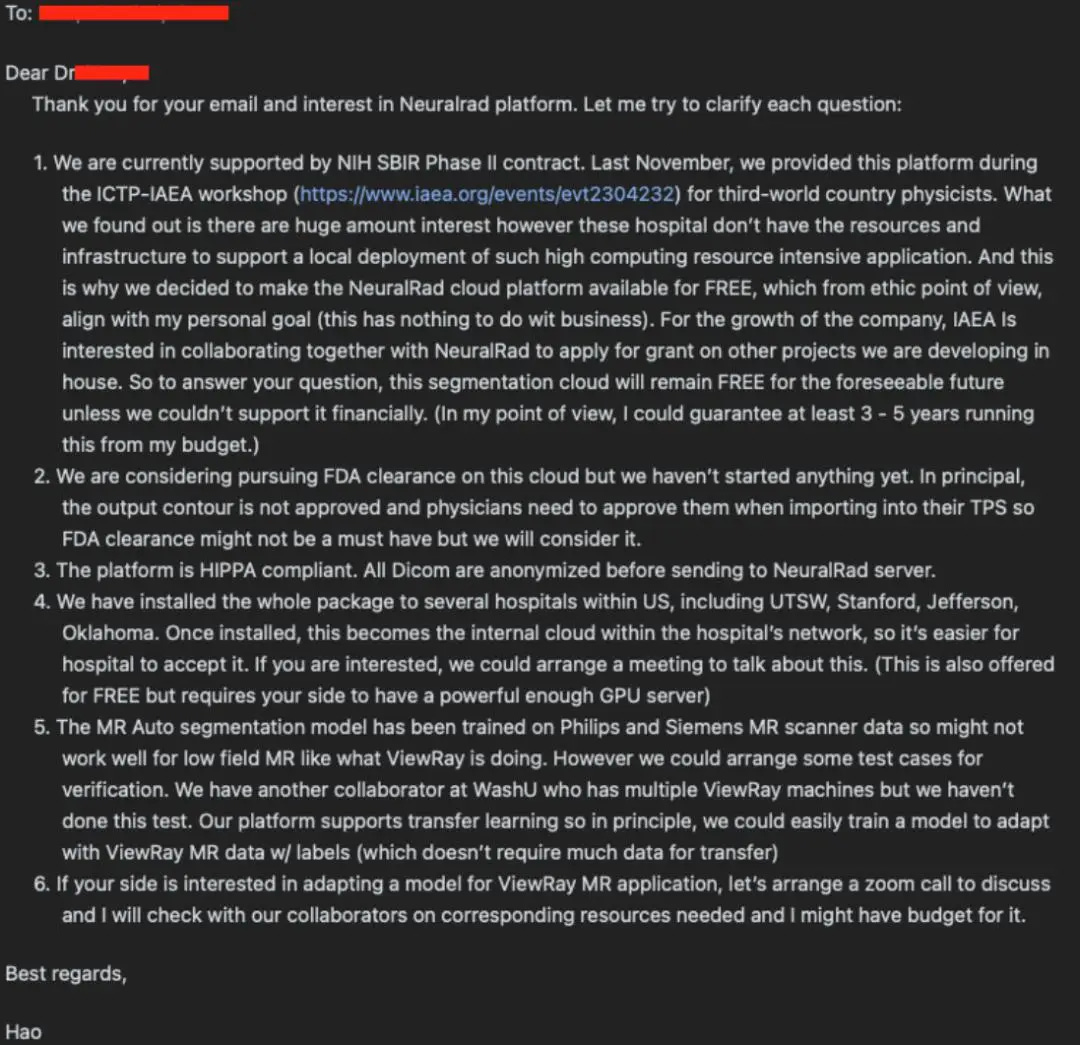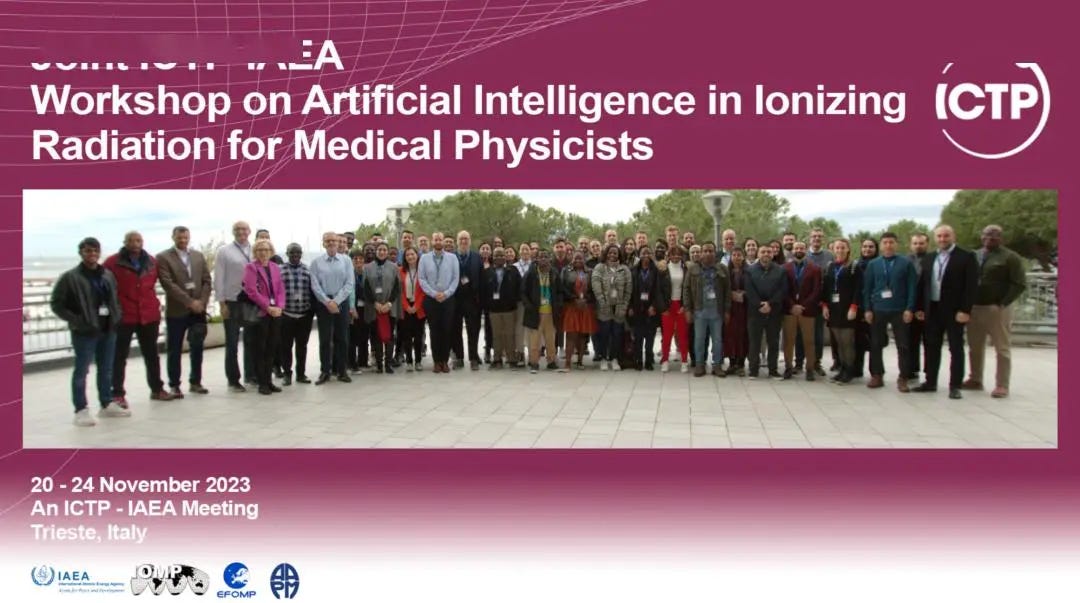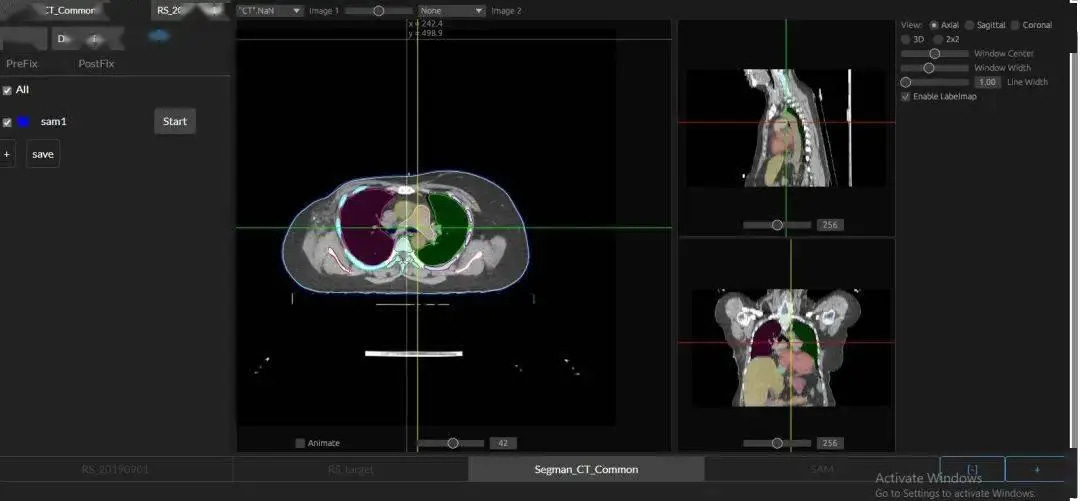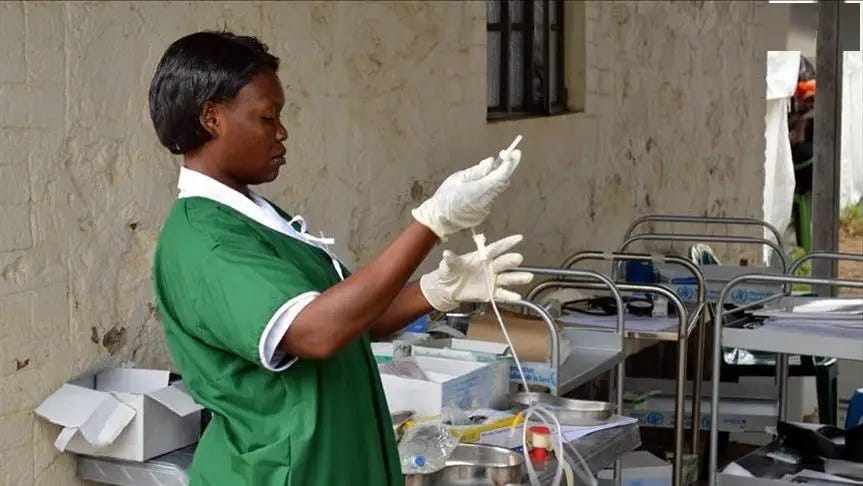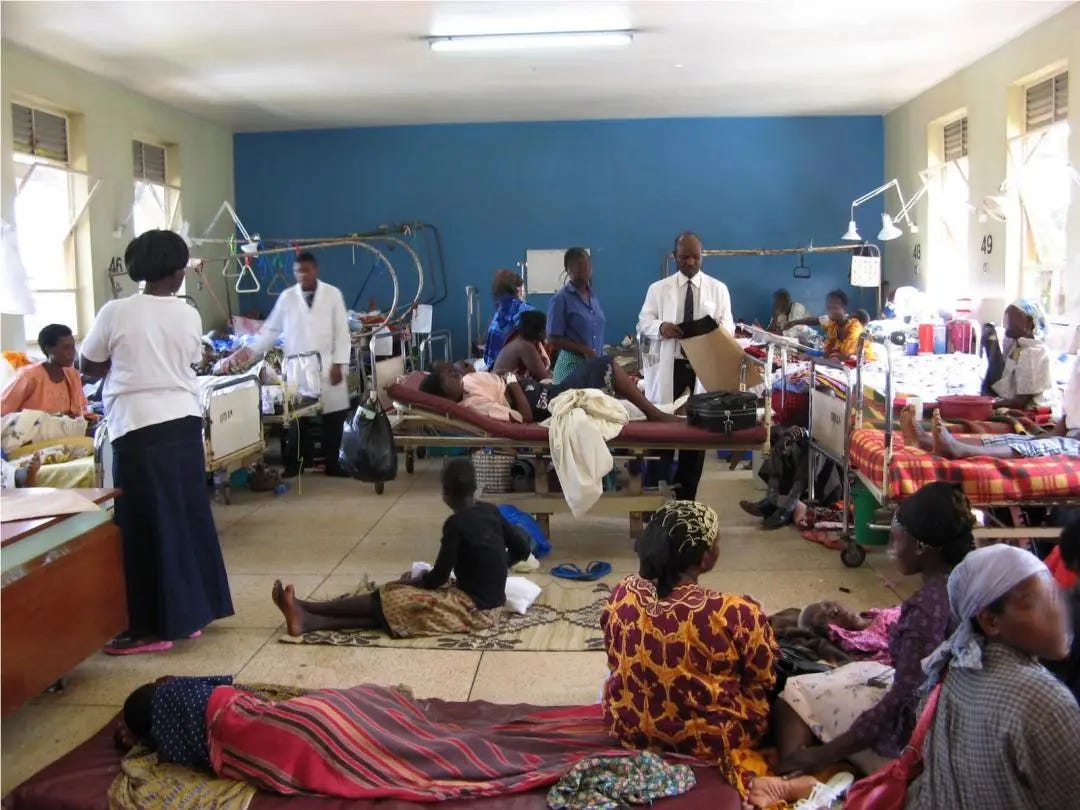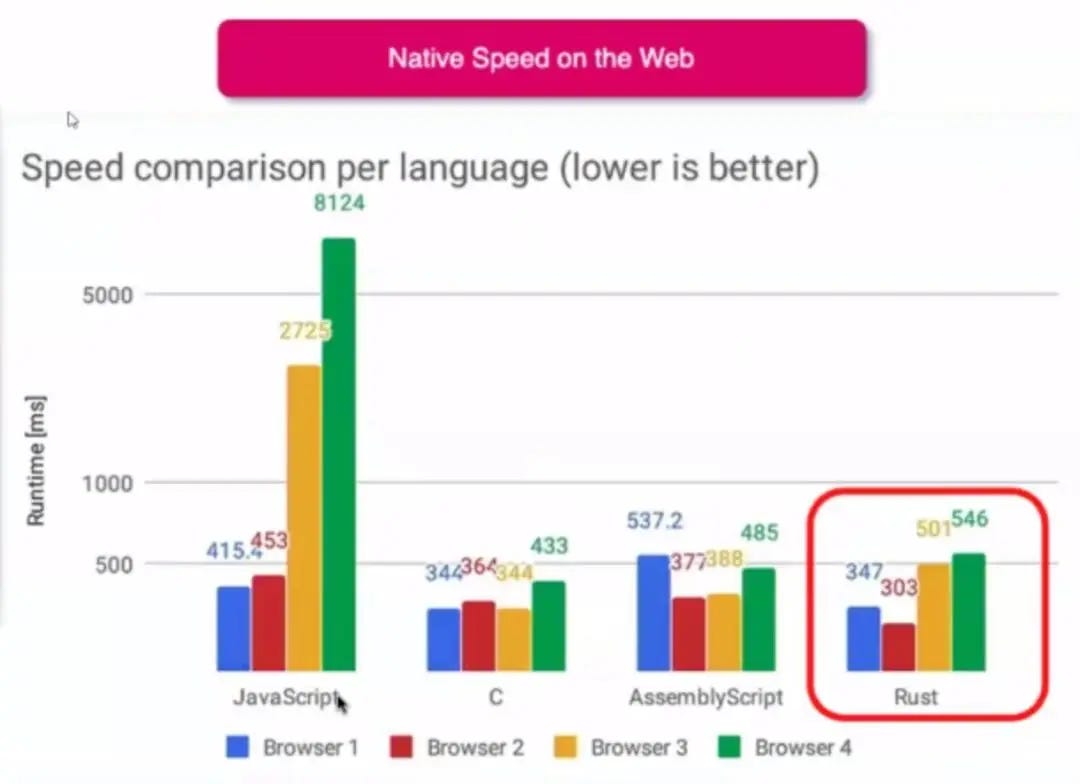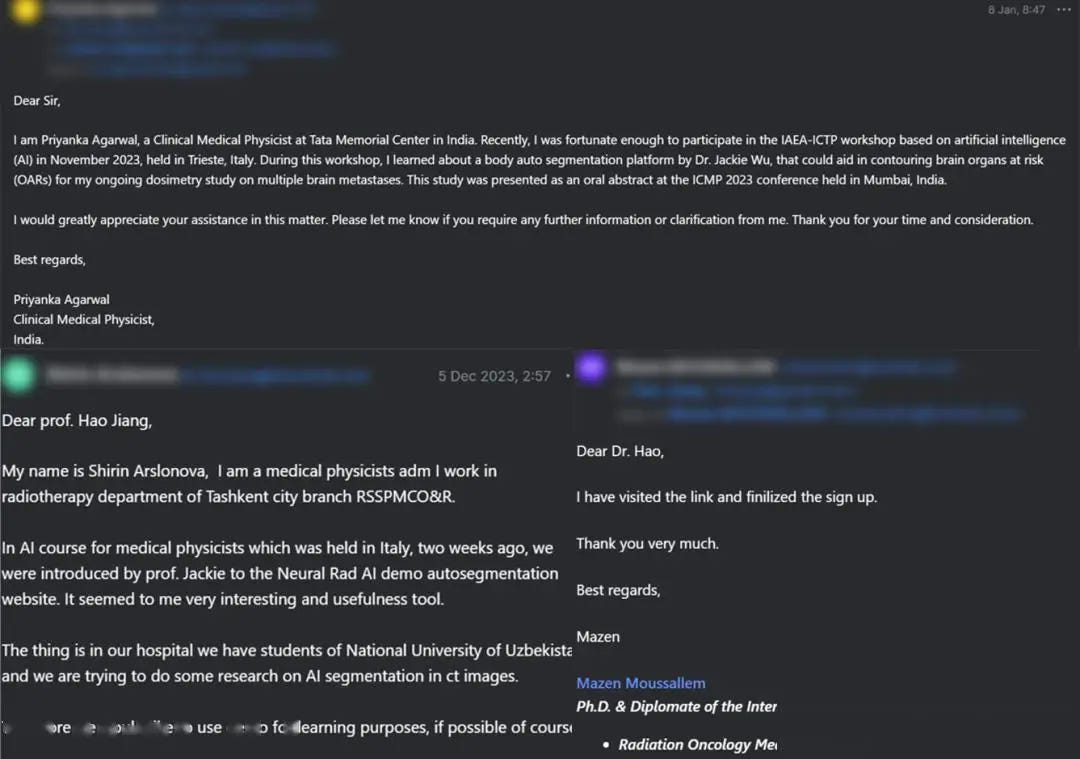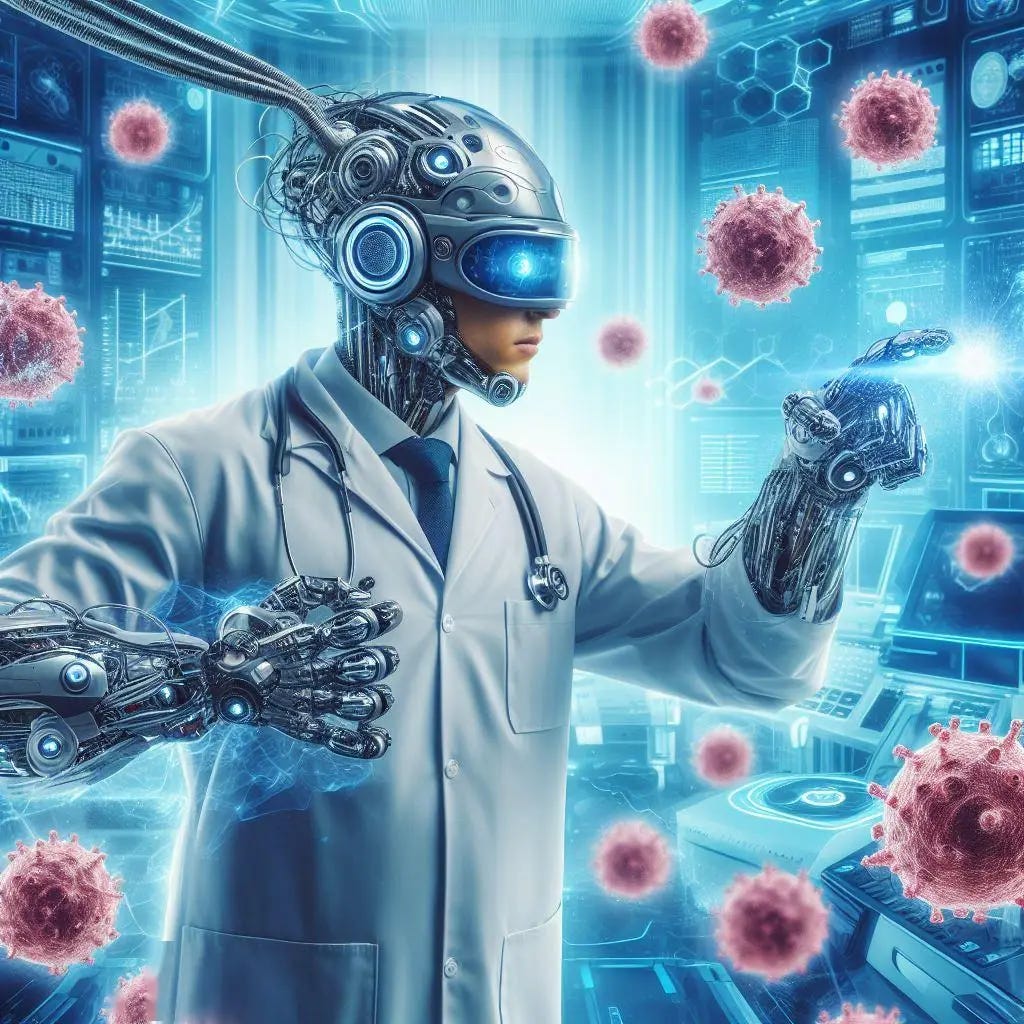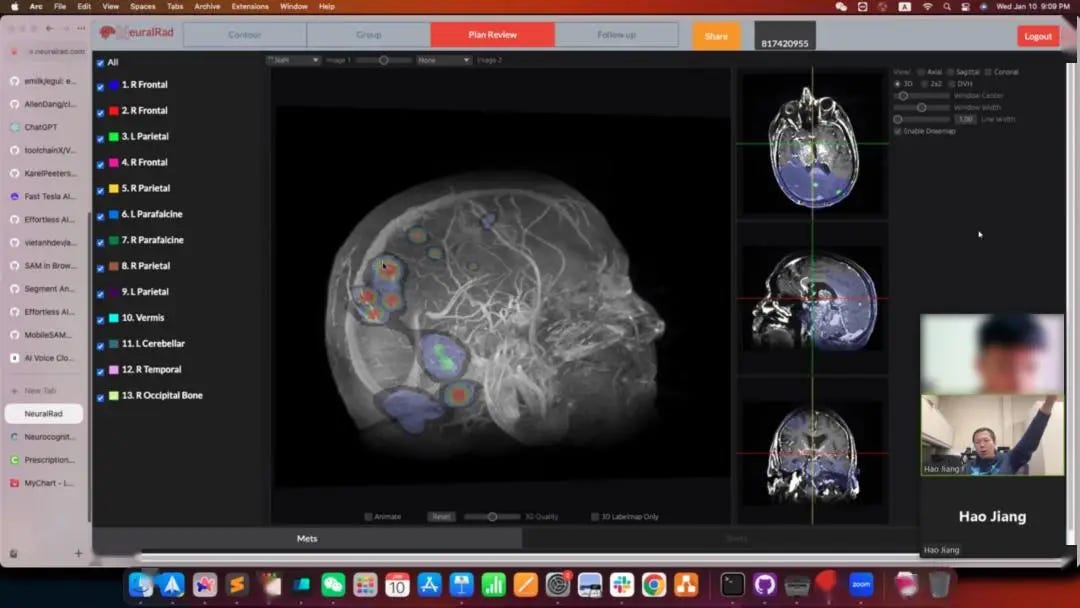After switching from 1080ti to 4090, this programmer wants to save lives by offering FREE services
Late last month, I received a message.
This message came from our old friend, coolwulf Hao Jiang.
The content was about coolwulf's new project—NeuralRad.
In his words, it is "the first free organ and tumor segmentation cloud service in history."
Just upload a CT or MRI scan, and AI can automatically identify and segment whole body organs within a few minutes.
For the brain, there is also a separate function to outline brain tumors.
If you're a long-time follower, you should be familiar with the name coolwulf.
Coolwulf, real name Hao Jiang, might ring a bell from back in 2022, when we covered this luminary who studied physics at Nanjing University and earned a Ph.D. in Nuclear Engineering and Radiological Sciences from the University of Michigan.
Not only has he made significant contributions to his major field of medical imaging, but in his private life, he's also an "amateur programmer" with off-the-chart technical skills.
In 2018, when AI technology was just starting to gain traction, coolwulf used 50 1080ti GPUs to build a computing cluster for training large-scale models for breast cancer image detection.
Over the years, he completed several AI projects, including breast cancer detection and brain tumor delineation.
The key point is that he usually funded his projects out of his own pocket, offering them completely free of charge.
This spirit of sharing technology might be the best interpretation of the "open source" definition within the programmer community.
Until not long ago, people were still leaving comments under our videos to express their gratitude, saying that coolwulf's free website helped them confirm cancerous changes.
This allowed for timely surgical intervention, successfully containing the cancer at an early stage when it was more easily treatable.
A free tumor segmentation cloud platform
Now, two years later, coolwulf has made another breakthrough.
But to be honest, when I first heard this news, I was a bit confused.
Because research related to cancer might only be fully appreciated by clinical physicists in oncology. Ordinary people, likely including myself, would probably be baffled by the details.
So, to make it understandable for a layperson like me, coolwulf even took the time to hold a video conference, sharing his screen and educating me for an entire morning.
After nearly a month of communication and consulting with several doctors, I finally came to understand it clearly.
Different from two years ago, the new platform brought by coolwulf, NeuralRad, has updated the whole body organ segmentation function.
It takes only about ten minutes to automatically segment the whole body organs with different colors marked, at most.
This is a very nice auxiliary feature for doctors when planning radiation therapy. In order to keep the normal organ tissue away from radiation, having each organ clearly marked after segmentation saves time and effort.
Moreover, the platform can also mark each vertebrae individually, which greatly improves surgical accuracy when treating conditions like spinal cancer.
Furthermore, coolwulf has also upgraded the previous achievements in brain tumors and integrated them into the platform.
For brain MRI images, this platform can automatically delineate tumors, significantly reducing the likelihood of detecting false positives.
This integration streamlines the workflow to minimize instances of false positives.
In the example with two images below, the solid line represents AI delineation, while the dashed line represents manual delineation by a doctor. The difference between the two is very subtle, making subsequent verification quite convenient.
The level of convenience it offers is roughly akin to the difference between "writing homework" and "grading homework."
With the AI's automatic delineation, even patients without any medical background can clearly see the location, size, and number of tumors in their brain in 3D images, which is quite intuitive.
Furthermore, by comparing the MRI results after each radiation therapy session, patients can also see where tumors have been eliminated or reduced in number.
In some cases, this can greatly enhance the trust between doctors and patients, with both parties having an equal understanding of the medical condition.
Currently, the platform is still in its Beta phase, with many features awaiting improvement. Coolwulf is continuously updating it, adding new functionalities almost every few days.
This platform has also been selected by the International Atomic Energy Agency (IAEA) as a project for the IAEA 2023 Medical Physics Artificial Intelligence Workshop. Moreover, as soon as it went online, coolwulf received cooperation inquiries and greeting emails from all over the world.
These included not only radiation oncologists from various countries but also top international organizations in medical physics, such as the IAEA and Harvard Medical School.
The International Atomic Energy Agency (IAEA) is an organization that has established a relationship with the United Nations and is comprised of governments from around the world cooperating in the field of atomic energy in terms of science and technology. Its headquarters are located in Vienna, Austria. The organizational structure includes the General Conference, the Board of Governors, and the Secretariat.
(Source: Baidu Baike)
The cooperation email sent by the IAEA
In coolwulf's reply to Harvard Medical School
In the last two years, with the explosion of AI technology, similar AI medical imaging technologies are developing at a speed beyond our imagination, with potentially hundreds of related research projects being initiated worldwide each year.
In this wave of artificial intelligence, coolwulf's project is not unique.
But the significance of his work goes far beyond just being another AI project.
Countries in the third world, where resources are more limited, have a greater need for AI technologies.
A few days ago, I managed to get in touch with a physical therapist from Peshawar, Pakistan—Syed.
Peshawar, where he is based, has a population of about 600,000 and is adjacent to Afghanistan.
This city boasts a significant number of historical landmarks. While not highly developed economically, it serves as an important Central Asian hub for transportation and trade, inhabited by some of Pakistan's most industrious people.
Like much of Pakistan's northwest, the area is frequently subject to terrorist attacks and has long been affected by insurgency, at one point being dubbed "one of the world's most dangerous cities."
Syed told me that the biggest issue in his region is the extremely tense doctor-patient ratio.
Almost every hospital is operating over capacity, treating patients while also receiving a significant number from Afghanistan, with this group making up as much as 60% of the patient base.
Given the scarcity of medical equipment and personnel, the medical conditions in Peshawar are not optimistic.
However, in November last year, he participated in the IAEA Workshop (International Atomic Energy Workshop).
It was there that he learned about coolwulf's completely free NeuralRad platform, and since then, he has been in email contact with coolwulf.
Syed has been testing the platform for a while now, and he indicates that the OAR (Organs At Risk) delineation feature significantly reduces the time he spends manually outlining tumors for patients, making the process of creating treatment plans smoother.
In the time-sensitive field of cancer treatment, the impact is clear: it enables the treatment of more patients.
Dr. Syed's use of the NeuralRad platform
However, there are many countries with medical facilities as underdeveloped as those in Peshawar.
For example, in Africa, only 48% of the population has access to medical services.
In India, the ratio of doctors to patients has reached a staggering 1:10,000. Similar levels are found in third-world countries like Myanmar, Iraq, South Africa, and others.
Moreover, the quality of doctors in these regions varies significantly.
Features like organ segmentation in NeuralRad, while perhaps not necessary for most experienced radiation therapists in our country, are incredibly useful in countries where the level of medical expertise is lacking. Such a feature can save nearly a day's time in just a few minutes for many doctors in these regions.
According to coolwulf:
"Currently, many countries cannot operate Treatment Machines (radiation therapy machines) and CT scanners simultaneously due to insufficient power supply.
This might be hard to imagine for countries like China or the USA, but hospitals in these countries do not have hardware with sufficient computing power, nor do they have the funds to purchase AI service software. There's also a lack of understanding about AI technology, and even the performance of computers used by doctors can't be guaranteed."
Therefore, to allow third-world countries with relatively backward medical conditions and difficulties in accessing medical care to also benefit from technological conveniences, coolwulf decided to make the NeuralRad platform, like his previous projects, completely free.
"As for charging, it's simply not realistic; they can't afford it," coolwulf said.
However, merely being free is not enough.
After all, most AI-related medical hardware faces significant local computational demands, and the cost of such equipment is beyond what many countries can afford.
Thus, coolwulf also set up cloud servers on his own. This allows users to simply upload CT files to the browser and wait for the cloud to finish processing, enabling stress-free operation.
This means that the cost of hardware use is virtually zero.
CT file cloud processing notice
To meet the stringent condition of "relying solely on a browser," coolwulf utilized Web Assembly for its higher efficiency in web-based execution and took it upon himself to learn Rust language from scratch, rewriting the entire frontend code.
Although programming languages are interchangeable and somewhat easier to pick up, this endeavor still required a significant amount of time.
Comparison of the efficiency of different programming languages in web-based execution
Currently, the doctors who have contacted coolwulf come from countries with scarce medical resources, including but not limited to India, Lebanon, Tashkent, and Pakistan.
These regions either have outdated medical equipment, an overwhelming doctor-to-patient ratio, or have been continuously affected by conflict, all of which urgently require efficient tools to improve work processes.
Now, including these countries, and even others like China and the USA, hospitals are gradually integrating or attempting to integrate NeuralRad into their daily workflows.
In coolwulf's view, the cloud is the future, and the browser is a current portal carrying the future.
In his vision, hospitals in the future could significantly reduce labor costs with AI, while also eliminating the need for local computational hardware burdens.
This would elevate the average level of medical care worldwide by one level.
Even in less developed countries, the same improvement would be seen.
coolwulf showed me one of the hardware setups in his studio.
PS: He upgraded from 1080Ti to 4090 and 3090 graphics cards.
Witnessing an era where AI serves as the "scalpel"
Counting this, it would be the third time I have reported on cancer-related imaging AI technology.
From the initial projects on breast cancer and brain cancer by coolwulf, to the recent pancreatic cancer and chest scan projects by Dr. Zhang's team in Shanghai, and now to the NeuralRad platform, in just a short span of two to three years, we have witnessed alongside our followers the budding and initial stages of this field.
Perhaps the specialized medical terminology is hard to understand, and the applications and codes of AI can be dizzying.
Yet, in an almost predestined manner, we can catch a glimpse of a future that was once unthinkable.
That is, in facing cancer, humanity's century-old enemy, doctors can, like Iron Man, exhibit superhuman abilities with the support of full-body intelligent technology.
The era that heavily relies on human labor, marked by issues in the doctor-patient ratio due to time costs, will eventually become a thing of the past, and we are visibly moving away from it at a noticeable pace.
I have had brief conversations with several domestic radiologists and radiation oncologists.
Currently, many top-tier hospitals have been using AI technology platforms for a considerable length of time and have achieved notable practical results. Many patients have received more efficient treatments with AI assistance. Moreover, many medical schools in the country have also added AI in medicine to their curriculum for medical students.
Nowadays, more and more people like coolwulf are dedicating themselves to the field of AI in imaging, and the technology is bound to mature even further.
And we are right in the midst of this rapid development phase.
Fortunately, this wave of development has encountered fewer barriers.
Many of the projects I have come to know about have made it possible for regions with less advanced technology to still enjoy the transformative benefits of science and technology.
For instance, coolwulf's offering of completely free and cloud-based services is one such example.
Similarly, Alibaba's DAMO Academy, a leader in AI healthcare in China, has also partnered with the Ministry of Health of Antigua and Barbuda to provide AI medical products and the scientific approach of "Plain CT+AI" for early screening of a series of cancers and other chronic diseases.
Embracing everyone equally, I believe, is the most crucial aspect of technological development.
As for coolwulf's future plans, he hopes NeuralRad can become a collaborative tool similar to Figma, allowing physicians, radiation therapists, dosimetrists, and nurses to operate the software simultaneously, making the treatment process more efficient (a goal that has largely been achieved already).
Additionally, he aims to use a vast amount of clinical trial data to train a model capable of providing various cancer treatment plans. This model would offer information on the success rate of each plan and recommendations for the choice of radiation therapy equipment (such as Gamma Knife, CyberKnife, or linear accelerators like TrueBeam), enabling doctors to quickly find the best approach.
And there are many more unique trials being conducted by others.
To this, I only want to say:
If there's a future, I hope it arrives quickly.
This article was originally in Chinese and posted at: https://mp.weixin.qq.com/s/vDzyKIKxuP7jCfmx6FPE4w
Written by: Bare-chested Punk
Edited by: Mangshan Branding Iron Head & Mianxian
Cover: Huanyan
Image and information sources:
turbosquid、DUKE、Grand Challenge、coolwulf、NeuralRad、
YouTube:NeuralRad Head & Neck platform、
Joint ICTP-IAEA Workshop on Artificial Intelligence in Ionizing Radiation for Medical Physicists、
Only 48% in Africa get needed healthcare services'、
Leveraging global binary masks for structure segmentation in medical images、Deep-learning and radiomics ensemble classifier for false positive reduction in brain metastases segmentation
Special thanks to: Alibaba DAMO Academy, Stanford University GU Club Laboratory
NeuralRad:

